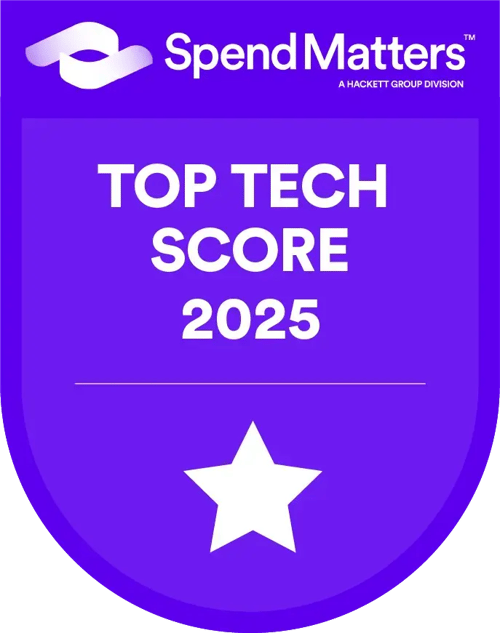Thought Leadership
User-centered design in 4 steps
Fiona Kaihari • May 4, 2022
At Sievo, we apply user-centered methods in all solution areas and invite all the users to participate. Some of the activities include in-application rating, questionnaires, coffee breaks with users, user testing, and interviews. In this post, you will learn how user-centered design methods are being used in designing a whole new product for savings and initiative management!
New product for Initiative Tracking
We have a long experience in helping our customers to drive their savings projects with our solutions. We are living exciting times as we are currently building a new product for savings and initiative tracking.
While reducing costs is still high on procurement’s priority list, we also see other themes, such as reducing CO2 footprint and mitigating risks where procurement plays a key role. What we eventually want to achieve is a more comprehensive solution for tracking procurement initiatives and performance.
The beauty of building a completely new product from scratch is that anything is possible. At the same time, it is crucial that we manage to build a solution that meets the business requirements as well as exceeds in user experience. For this reason, we have been including our customers at every step of the development to ensure all business requirements and user needs are covered.
Keep reading to find out how we are doing this!
The design process
The first step of the research process focused on understanding the market and customer requirements as well as identifying the key user groups of the product. After gaining an understanding of what kind of high-level customer problem we are solving and the value that our product can bring, the second step focused on applying these insights to the product. New concepts were created, and user interfaces were designed.
Next, the new concepts and designs were presented to the users. Thus, the third step aimed to validate the new concept ideas and get feedback from the users. After the second round of interviews, during the fourth step, the designs and concepts were reviewed and redesigned based on user feedback and interview insights. Continuously including end-users in the development process allows the team to fail fast and react to emerging issues in an early stage of development.

The design process
Step 1: Defining User Personas and Tasks
To begin, we analyzed the market by investigating what kind of solutions are out there, what kind of features are looked for in new sales cases, and what could be our competitive edge with the new product. We also wanted to get a better understanding of the customer side process for savings tracking and what other kinds of initiates are being tracked. This was achieved by conducting extensive desk research and talking to key stakeholders in our customer organizations.
The objective was also to identify key user groups of SPM and understand how they are using the current product. Therefore, we conducted a set of interviews with end-users in different roles. A total of nineteen end-users were interviewed. The interview insights were then used to draft user personas and user stories.
User personas are typical users whose characteristics represent the needs of a larger group of users. The user personas often describe the goals, tasks, motivations, and needs of a specific user type. They also help designers create user empathy and truly understand user needs.
When designing a savings and initiative tracking tool for procurement, the user personas were especially helpful in communicating the user needs across the multi-disciplinary team of developers, analysts, and business owners.
Next, the user personas were used to create user stories. In software development, the user stories are short descriptions of features; how they are used, by which type of user, and why.
They often look like this:
As a (user persona), I want (some goal) so that (some reason).

At Sievo, the user stories are an essential part of designing and developing the product. Without a clear view of the user's needs, it is impossible to know what problems need to be solved. Therefore, all the development projects always begin with defining user stories. In Sievo product teams, user stories are often drafted by Product Managers and Service Designers. Product Managers' knowledge of the business requirements creates synergy with the user's understanding of a Service Designer.
Initiative management in large organizations is a complex process with multiple stakeholders involved in multiple different roles and tasks. Therefore, it was vital to understand the interconnections between different users and their tasks. A service blueprint was used to gain an understanding of how different user personas interact and collaborate. Service blueprints visualize different components of the service and how they interact with each other. When designing the new initiative tracking tool with multiple stakeholders, the service blueprint was especially useful to gain visibility on different user journeys and touch-points with the service.
Service blueprint example
Step 2: Designing and prototyping
Based on the insights from the first round of user interviews, new concept ideas were developed, and new user interfaces were designed and turned into prototypes.
Prototypes are exploratory versions of the proposed solution, used to test and validate ideas. Prototyping is an essential part of the product design process as it allows the team to iterate on the designs and make possible changes to the user interfaces. Prototypes can vary from post-it notes (low-fidelity) to interactive digital versions (high-fidelity). Modern technologies, such as Figma, allow us to easily create digital interactive high-fidelity prototypes and test them with end-users.
Step 3: User testing and validation
User testing is an important part of the product design process. It allows us to gain contextual feedback directly from the end-users and understand what the users might struggle with. Testing the design concepts with users can save a remarkable amount of time when done in the early phase of development.
When designing the new initiative tracking solution, the second round of research aimed to do just this; validate new design concepts and get feedback on new designs before being developed. The users were presented with concept ideas and prototypes of the new product, and they could freely comment and ask questions.
The interviewees were selected based on user attributes and role in the savings and initiative management. The previously created user role descriptions were useful to ensure that the discussed topics and user interfaces were relevant to the interviewees. The users were also grouped based on the customer organizations' methodology to manage savings and initiatives.
In the second round of interviews, we talked to sixteen users and presented them with the new designs and concept ideas. In terms of the new concept ideas, the goal was to validate them and get insights on how we should carry on implementing them. With the new user interfaces, the aim was to evaluate the usability. After analyzing the feedback, the next step was to iterate on the designs.
Step 4: Develop & deliver

User-centered design is never a linear process. When feedback is to be incorporated into the designs, the process has to be iterative.
The new initiative management tool is planned to be piloted with a customer before the first release. The first version will include a limited set of features, after which the development will focus on enhancements and extensions that will be gradually released.
From a design perspective, the goal of the piloting is to collect user feedback and identify areas of improvement. The first version will not provide a solution to all identified user needs, therefore, user feedback will help in prioritizing which features should be developed next. Moreover, user feedback will help us to validate the usability of the new features.

Open Positions
Welcome to explore our open job opportunities around the world
- Position
- Location
- Apply Before

